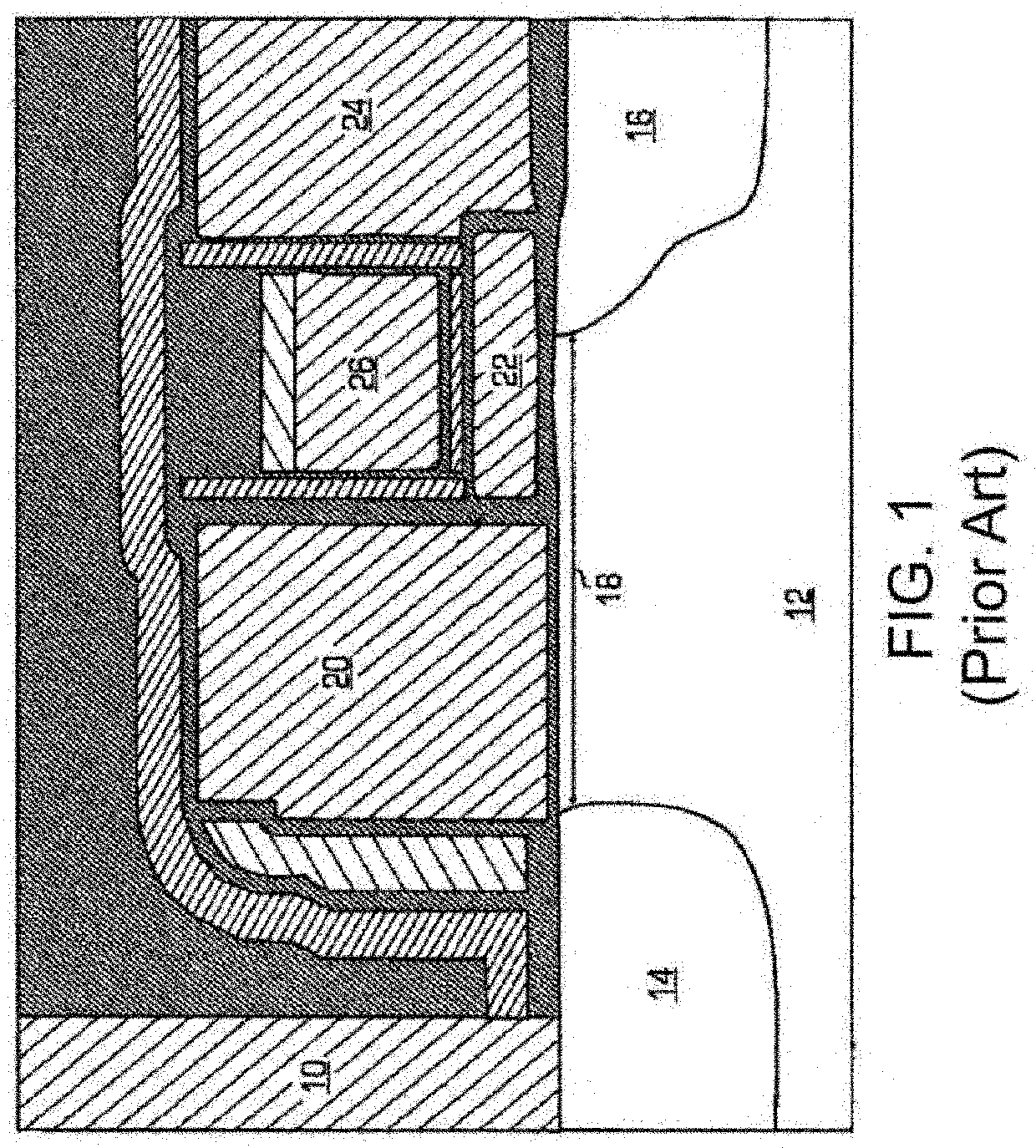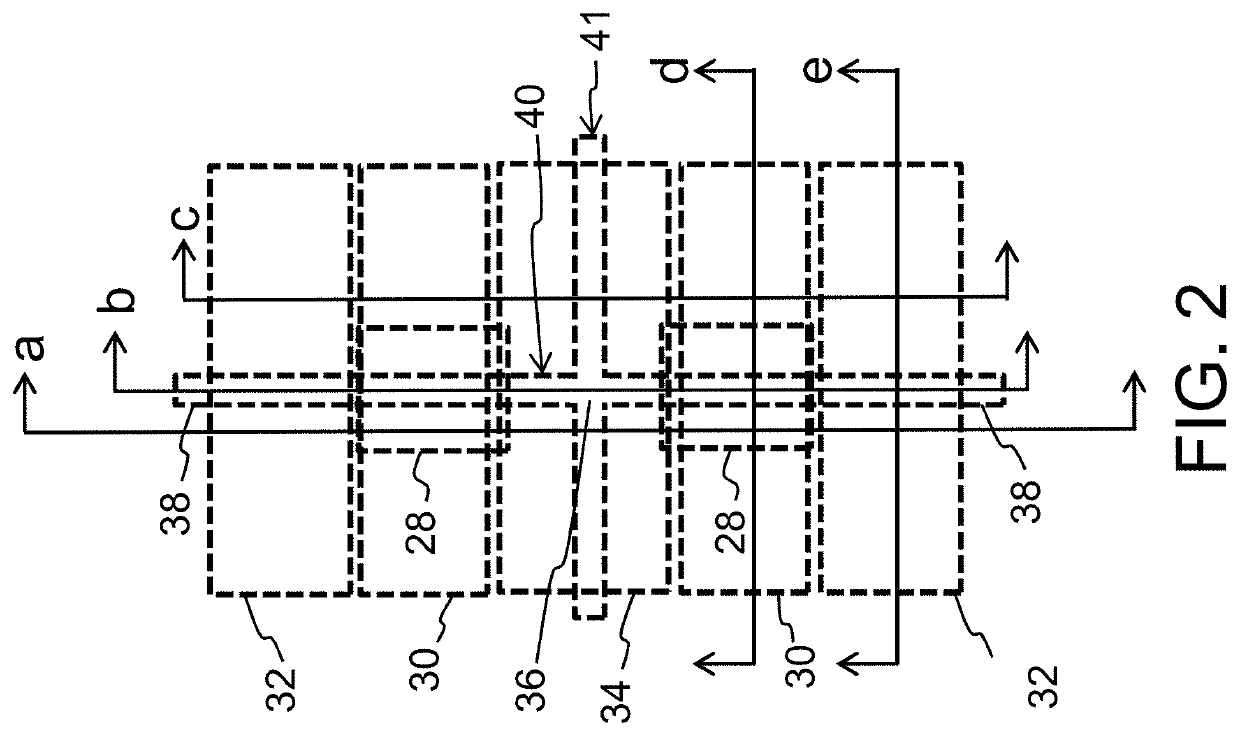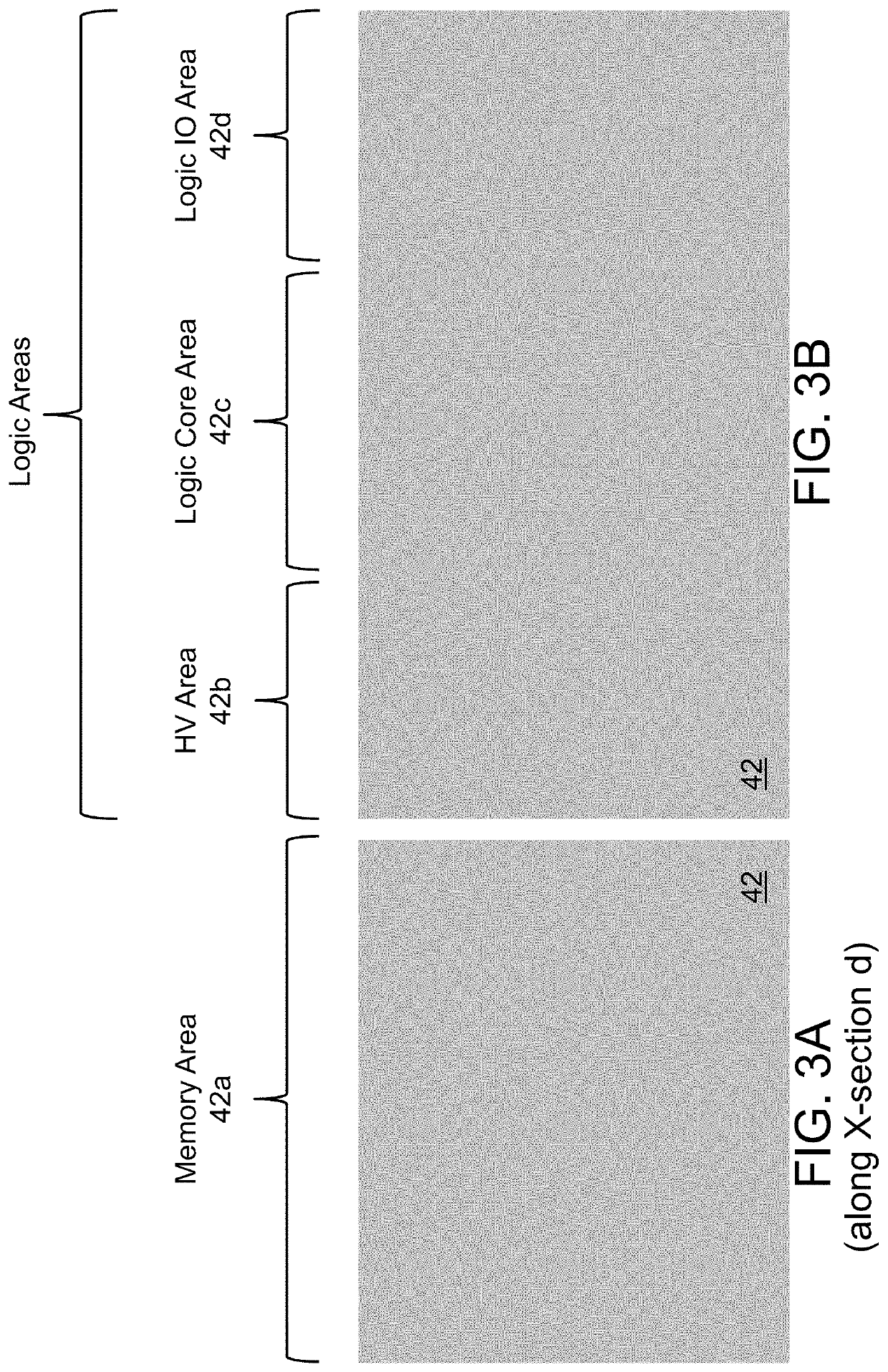Split Gate Non-volatile Memory Cells With FINFET Structure And HKMG Memory And Logic Gates, And Method Of Making Same
a non-volatile memory, logic gate technology, applied in the direction of semiconductor devices, electrical devices, transistors, etc., can solve the problem of adding to the cost of making the devi
- Summary
- Abstract
- Description
- Claims
- Application Information
AI Technical Summary
Benefits of technology
Problems solved by technology
Method used
Image
Examples
Embodiment Construction
[0015]The present embodiments enable a memory device having Fin-FET split gate type memory cells each having four gates: a floating gate 28, control gate 30, a select gate 32 and an erase gate 34. Fin-FET logic devices are formed on the same substrate as the memory cells. FIG. 2 is a top view illustrating the configuration of a mirror pair of memory cells in the memory area of the substrate. The mirror pair of memory cells share a common source region 36 (i.e., a region of the substrate having a second conductivity type different than the first conductivity type of the substrate), where drain regions 38 (of the second conductivity type) are shared among adjacent pairs of memory cells (not shown). The substrate includes crossing fin shaped portions 40 and 41 of the upper surface of a semiconductor substrate 42. The memory cells are formed on the fin shaped portions 40. FIG. 2 further shows the cross sectional view directions a, b, c, d and e for subsequently described figures.
[0016]T...
PUM
 Login to View More
Login to View More Abstract
Description
Claims
Application Information
 Login to View More
Login to View More - R&D
- Intellectual Property
- Life Sciences
- Materials
- Tech Scout
- Unparalleled Data Quality
- Higher Quality Content
- 60% Fewer Hallucinations
Browse by: Latest US Patents, China's latest patents, Technical Efficacy Thesaurus, Application Domain, Technology Topic, Popular Technical Reports.
© 2025 PatSnap. All rights reserved.Legal|Privacy policy|Modern Slavery Act Transparency Statement|Sitemap|About US| Contact US: help@patsnap.com



